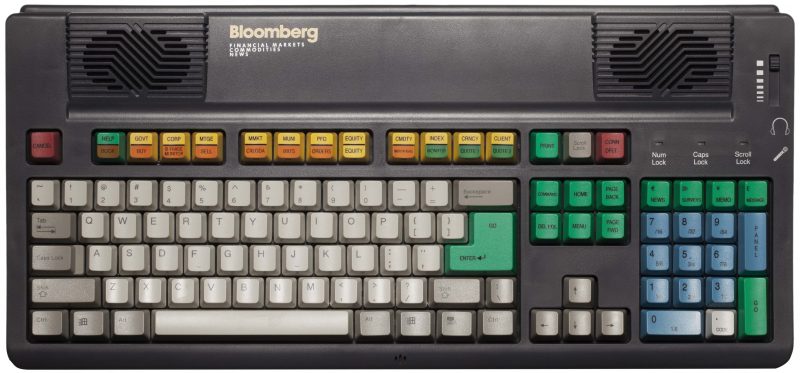
May 19, 2016 - You have to have a Bloomberg keyboard to work in finance. Keyboard you just get the fingerprint thingy on it's own and use your own keyboard. Instead of a DJ controller, there are USB controllers for scrubbing through.
The P45 zero client doesn't recognize the biometric finger scanner that's built into the newest Bloomberg Keyboard. I can get the VM to recognize the biometric scanner by configuring the USB permissions and bridging it to the VM, however the audio quality is significantly degraded.
The older Bloomberg keyboards are recognized and locally connected that doest negatively affect sound quality. Is there a process to submit a request to have the newest keyboard drivers built into the Tera2 firmware? This is what Bloomberg recommends: Configuring VMware Horizon with View Client for The Starboard Keyboard =================================== Connecting with VMware View Client Requirements: • Access to the Host OS Registry editor • Two USB cables for the Starboard Keyboard Step 1: • Close the View Client and open the registry editor.
Step 2: • Browse to: a. 32bit versions of Windows: HKLM Software Wow6432node VMware, Inc. VMware VDM USB.
64bit versions of Windows: HKLM Software VMware, Inc. VMware VDM USB - If the key does not exist, you must create it by right clicking on VMware VDM and selecting “New -> Key”.
Step 3: • Create a new “Multi-String value” named “AllowHardwareIDs” if it does not already exist, and add the following value by double clicking on it: VID_1188&PID_9535 Step 5: • Create a new “String value” named “AllowDevDescFailsafe” and set its value to “True.” - This allows devices to be redirected even if the View client fails to get the cong/device descriptors. Step 6: • Exit the registry editor, open the View Client and reconnect to the Virtual Machine.
=================================== VMware Horizon with View Client Configuration through Group Policy Requirements: • Access to the windows domain controller • Two USB cables for the Starboard Keyboard Step 1: • On your Windows Domain controller, download and install VMware view GPO (Global Policy Object) package. Step 2: • On both the VMware View Agent and the VMware View Client Configuration, edit “Include Vid/Pid Device”, and add the following: “vid-1188_pid-9535” Step 3: • Activate “Allow Auto Device Splitting” for both Agent and Client USB Configuration. Step 4: • Make sure the GPO is published to all users. Step 5: • Open the View Client, connect to the virtual machines and test. =================================== Configuring The Starboard Keyboard on Dell Wyse Clients Requirements: • Access to the zero client’s Administrative Web Interface (AWI) Step 1: • Log in to the zero client’s Administrative Web Interface (AWI).

- PCoIP zero clients and PCoIP remote workstation cards (host cards) include a web server for monitoring and configuration. To connect to this Administrative Web Interface, simply enter the PCoIP device's IP address into a supported browser. Step 2: • Go to Info –> Attached Devices. - Write down the VID and the PID of the Bloomberg Keyboard. Wyse Zero Clients Step 3: • Go to Permissions –> USB. Step 4: • Under Bridged Devices, click Add new.
Mr photo 16 download. - Type in the Vendor ID (VID) and the Product ID (PID) into the correct fields. - Click Add - Click Apply Step 5: • Reboot the Zero Client and test.
=================================== Wyse Thin Clients - Wyse Thin OS (WTOS) Requirements: • Access to the Wyse configuration file (WNOS.INI) • Two USB cables for the Starboard Keyboard Step 1: • Connect the Starboard Keyboard to the Wyse Thin Client using two USB cables. - Access to the USB ports is located on the back of the Starboard Keyboard.
- Extra USB cables can be provided by Bloomberg Technical Support if required. Step 2: • Open the Wyse configuration file (WNOS.INI) with a text editor. - Might be located in the server, under /wyse/wnos/wnos.ini Step 3: • Add the following to your Wyse configuration file. #Bloomberg Device=vusb ForceRedirect=0x1188,0x9525,0x03,0x01,0x01 Device=vusb ForceRedirect=0x1188,0x9535,0x03,0x00,0x01 Step 4: • Reboot the Thin Client and test.